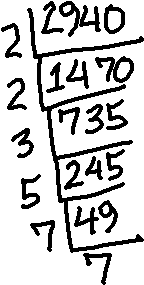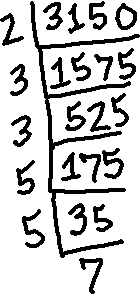Reducing Fractions
Purplemath
In what follows, it will sometimes be useful to remember that fractions can indicate division. For instance, 1/3 can mean "one divided by three", as well as "one part out of three parts". In fact, let's cut to the chase; memorize this sentence: "Fractions are division."
For instance, here's how you would find and use a form of 1 to reduce 4/8:
To be very clear, the point of finding the common factor (in this case, the 4's) is to allow you to convert part of the fraction to 1. Since 4/4 = 1, then what I did above was the following:
Warning: Note how I switched from a fraction with products (in the numerator and denominator):
...to a product of fractions:
This switch is okay as long as you're multiplying:
...but it is very much NOT if you're adding. For instance:
The left-hand side above, being a fraction containing addition, is equal to 5/6, while the right-hand side above, being an addition containing fractions, is equal to 1 1/2, so the two expressions are not at all the same value. Just remember: For fractions, multiplying is way easier than adding. Now, to get back to business...
In addition to the canceling method I used above (with the pink 1's), you may also have seen either of the following "shorthands" for cancellation:

Any of these formats is fine. The last two are probably simplest for your handwritten homework; the first one is easier for typesetting.
If you have a regular (scientific, business, etc.) calculator that can handle fractions, then you can enter the fraction and then hit the "equals" button to get the reduced fraction. If you have a graphing calculator with a fraction command, then you can enter the fraction as a division (because 4/8 means "four divided by eight"), and then convert to fraction form. Check your manual.
If your calculator can't handle fractions, or if the denominator is too large for the calculator to handle, here's how you do the reduction by hand.
Reduce to simplest form.
I'll grab my calculator and some scrap paper, and factor the numerator (top number) and denominator (bottom number). A quick shorthand for getting the prime factorization of each of these numbers is demonstrated below, in the stacked division (by prime numbers) of 2940:

To find the factorization, I just read off the prime factors from around the outside of the upside-down division. From the above, I can see that 2940 factors as 2×2×3×5×7×7.
Next, I'll factor the denominator, being the number 3150:

So 3150 factors as 2×3×3×5×5×7.
Now I can reduce the fraction by canceling off the common factors:
![2940/3150 = [ 2·2·3·5·7·7 ] / [ 2·3·3·5·5·7 ] = [ 2·7 ] / [ 3·5 ] = 14/15](https://www.purplemath.com/modules/fraction/frac06.gif)
The next section reviews mixed numbers and improper (or "vulgar") fractions....http://www.purplemath.com/modules/fraction.htm


No comments:
Post a Comment